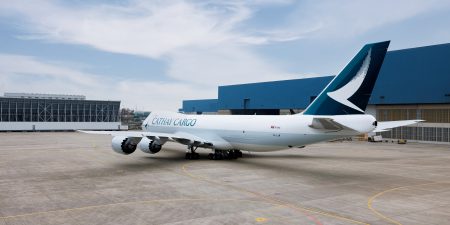12.55pm
We board the aircraft. As Captain, I review the maintenance log with the rest of the crew on the flight deck so we are all aware of the aircraft’s state.
1.00pm
We start the preflight preparation. The pilot flying the sector commences to programme the flight computers, while the other pilot goes outside to complete an external aircraft inspection – we call this a walk around, which takes about 10 minutes.
1.10pm
The final load information is delivered to the flight deck, which enables us to determine the final amount of fuel we will need. This information is passed on to a refuel agent standing by outside the flight deck. We then send the fuel figures via ACARS (a digital datalink for sending text messages) to our Central Load Control team, so they can prepare the load sheet.
1.20pm
Twenty minutes before departure, the loading supervisor updates us on loading progress.
1.30pm
The final load sheet is sent to the aircraft, and the supervisor lets us know that loading is completed.;
1.40pm
Pushback for departure is on schedule. Now that Hong Kong International Airport is quieter because of the reduction in flights overall, ground delays prior to departure and traffic delays flying back are reduced. We generally receive start clearance immediately and also attain our requested flight altitudes, enabling greater fuel efficiency.
The flight
After departure, we keep in touch with air traffic control to report our position, monitor the aircraft systems and also ensure any cargo loaded in specified sections is maintained at the correct temperature.
The absence of cabin crew onboard means that we freighter pilots prepare our own meals. Cathay provides a selection for us of vegetarian, low-calorie, Hindu and standard Western meals. Hygiene is of utmost importance, so we wear gloves and ensure the food is adequately heated.
On longer flights, we take turns to stretch our legs in the small upper deck area. With ‘heavy crew’ for long-haul flights, we can take a few hours’ rest in the two comfortable bunk beds in an area at the rear of the upper deck. Two crew – one of whom must be a relief commander or another Captain – occupy the flying seats while other crew rest, usually splitting the rest period equally. There are always two pilots in the seats except when one is using the toilet, stretching their legs or preparing meals.
Health and flying during COVID-19
There are other things we have to contend with due to the pandemic. As crew members, whenever we return to Hong Kong we are under medical surveillance. This means we must monitor our health and check our temperatures twice a day. Essentially, this is like quarantine. If a freighter pilot is based at an outport, they must remain in their room in the Cathay Pacific crew hotel – The Headland, located at Cathay City – for the period they are in Hong Kong and conduct medical surveillance. Hong Kong-based crew must remain at home and record their temperatures too.
Our rostering team now keeps an operating crew together for rostered trips with no changes to crew members in order to avoid any close contact with other crew from different flights as far as possible. We wear masks out at all times, and these are provided when we report for duty to cover the number of days we are away on a trip. However, we do not wear masks on the flight deck once doors are closed and the flight gets underway.
Operationally, the aircraft now have enhanced cleaning and disinfection procedures. Special cleaning procedures have been in place since the spread of COVID-19, and we have on board disinfectant, cleaning wipes and, of course, hand sanitiser. Enhanced cleaning and disinfection procedures also apply to the flight simulators at our home base.







